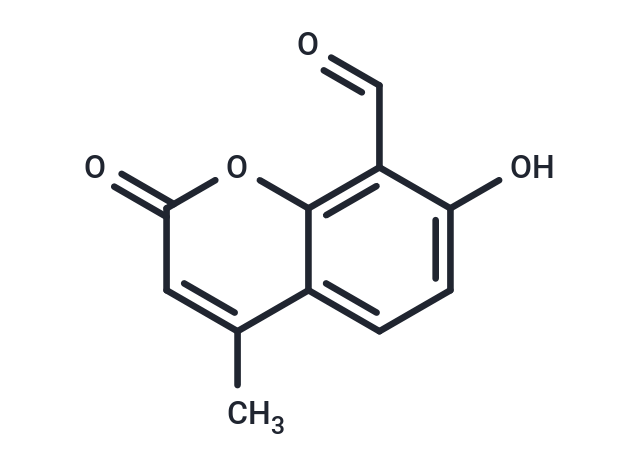Shopping Cart
- Remove All
 Your shopping cart is currently empty
Your shopping cart is currently empty

4μ8C (IRE1 Inhibitor III)(IC50=76 nM) is an effective and specific IRE1 Rnase inhibitor.

| Pack Size | Price | Availability | Quantity |
|---|---|---|---|
| 5 mg | $43 | In Stock | |
| 10 mg | $58 | In Stock | |
| 25 mg | $98 | In Stock | |
| 50 mg | $153 | In Stock | |
| 100 mg | $233 | In Stock | |
| 500 mg | $583 | In Stock | |
| 1 mL x 10 mM (in DMSO) | $48 | In Stock |
| Description | 4μ8C (IRE1 Inhibitor III)(IC50=76 nM) is an effective and specific IRE1 Rnase inhibitor. |
| Targets&IC50 | IRE1 Rnase:76 nM |
| In vitro | 4μ8C blocks substrate(RIDD) access to the active site of IRE1 and selectively inactivates both Xbp1 splicing and IRE1-mediated mRNA degradation. IRE1 inhibition subsequently induces ER stress without measureable acute toxicity. [1] 4μ8C, as an IRE1 inhibitor, blocks IL-4, IL-5, and IL-13 production from CD4+ T cells. [2] |
| In vivo | 4μ8C reverses the ER stress-dependent loss of several known RIDD targets, with an EC50 of approximately 4 μM, approximating that of inhibition of XBP1 target gene activation[1]. |
| Kinase Assay | In Vitro IRE1 RNase and RIDD Assays: Analysis of radiolabeled Xbp1 substrate cleavage is performed as previously except that mammalian IRE1 reaction buffer is used. In vitro RIDD substrates are synthesized by in vitro transcription using the T7-MAXIscript Kit in the presence of 32P ATP or Cy5-UTP on templates isolated by RT-PCR from mouse Min6 cells (Ins2) or PCR from cloned XBP1 cDNA. The resulting products are gel purified to obtain full-length substrate. Reactions are then separated by 15% UREA-PAGE for analysis by phosphorimaging or by near-infrared imaging using the LI-COR Odyssey scanner. |
| Cell Research | Cells are seeded in phenol red-free cell culture medium in 96 or 24 well dishes at a density of 5 × 103 or 5 × 104 cells per well, respectively. Cultures are incubated for 16 h before treatment with 4μ8C for 24 h. Cultures are then analyzed by the addition of 200 μM WST1 and 10 μM phenazine metho-sulfate. After development of the reagent for 2 h at 37°C, the hydrolyzed dye is detected by absorbance at 450 nm, after subtracting background and absorbance at 595 nm. Alternatively, cell viability is determined by staining of the adherent culture with crystal violet. Quantitation of the dye uptake is analyzed by extensive washing of the stained cells with water and solublization of the crystal violet in methanol followed by absorbance measurements at 595 nm. (Only for Reference) |
| Alias | IRE1 Inhibitor III |
| Molecular Weight | 204.18 |
| Formula | C11H8O4 |
| Cas No. | 14003-96-4 |
| Smiles | Cc1cc(=O)oc2c(C=O)c(O)ccc12 |
| Relative Density. | 1.541 g/cm3 |
| Storage | store at low temperature,store under nitrogen | Powder: -20°C for 3 years | In solvent: -80°C for 1 year | Shipping with blue ice. | ||||||||||||||||||||||||||||||
| Solubility Information | DMSO: 16.67 mg/mL (81.64 mM), Sonication is recommended. | ||||||||||||||||||||||||||||||
Solution Preparation Table | |||||||||||||||||||||||||||||||
DMSO
| |||||||||||||||||||||||||||||||

Copyright © 2015-2025 TargetMol Chemicals Inc. All Rights Reserved.